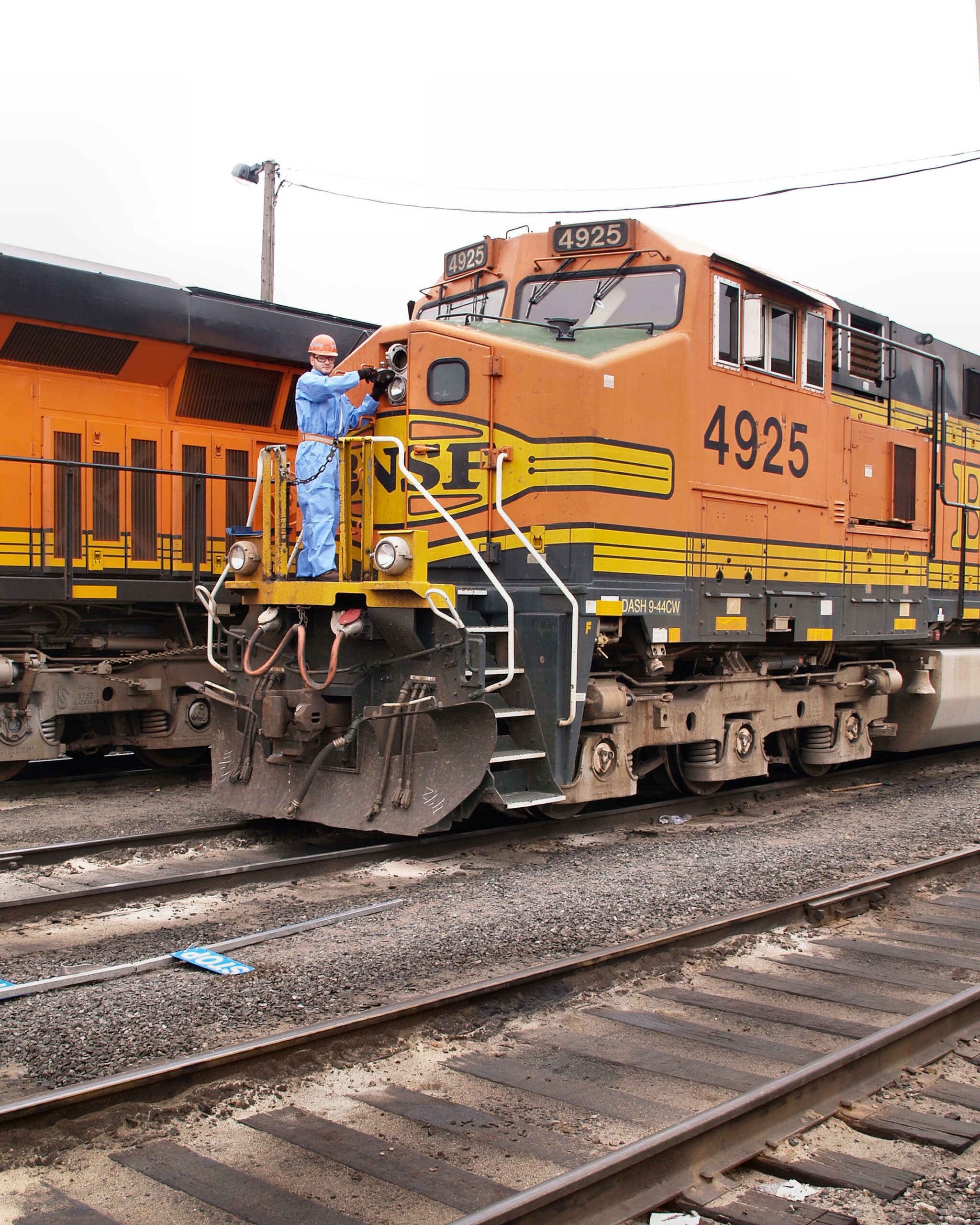After months of negotiations, the IBEW’s Railroad members at four of the largest U.S. freight carriers finally have what they’ve long sought but that many working people take for granted: paid sick days.
This is a big deal, said Railroad Department Director Al Russo, because the paid-sick-days issue, which nearly caused a nationwide shutdown of freight rail just before Christmas, had consistently been rejected by the carriers. It was not part of last December’s congressionally implemented update of the national collective bargaining agreement between the freight lines and the IBEW and 11 other railroad-related unions.
“We’re thankful that the Biden administration played the long game on sick days and stuck with us for months after Congress imposed our updated national agreement,” Russo said. “Without making a big show of it, Joe Biden and members of his administration in the Transportation and Labor departments have been working continuously to get guaranteed paid sick days for all railroad workers.
“We know that many of our members weren’t happy with our original agreement,” Russo said, “but through it all, we had faith that our friends in the White House and Congress would keep up the pressure on our railroad employers to get us the sick day benefits we deserve. Until we negotiated these new individual agreements with these carriers, an IBEW member who called out sick was not compensated.”
While President Joe Biden was calling on Congress in November to pass legislation to implement the agreement, he stressed that he would continue to encourage the railroads to guarantee paid sick time for their employees.
“I share workers’ concern about the inability to take leave to recover from illness or care for a sick family member,” Biden said. “I have pressed legislation and proposals to advance the cause of paid leave in my two years in office and will continue to do so.”
That pressure, plus the IBEW’s ongoing efforts, is paying off at last. The IBEW and BNSF Railway reached an agreement April 20 to grant members four short-notice, paid sick days, with the ability to also convert up to three personal days to sick days. The union reached similar understandings with CSX and Union Pacific on March 22, and with Norfolk Southern on March 10. Unused sick time at the end of a year can be paid out or rolled into a worker’s 401(k) retirement account.
Under the Railway Labor Act, national railroad labor agreements don’t expire. Instead, the parties enter a “status quo” position: Workers remain on the job with no changes to their pay and benefits until a replacement contract is approved. The current national pact was first reached last summer by negotiators from the railroad unions, the railroads, the Labor Department and the White House.
“We’ve been playing the long game on this, too,” Russo said. “We never stopped applying pressure on the companies or on Congress.”
On Feb. 8, Sen. Bernie Sanders of Vermont, chairman of the Health, Education, Labor and Pensions Committee, wrote a letter to the leaders of six Class I railroads, urging them to guarantee at least seven paid sick days for all of their workers.
“Last year, the companies you lead made over $22 billion in profits,” Sanders wrote, noting that they had cut 30% of the workforce over the last six years. “Guaranteeing seven paid sick days to rail workers would cost your industry just $321 million.”
Russo is grateful that Sanders stepped in. “We truly compliment his effort to bring dignity to workers in the rail industry,” he said. “Without it, we very likely would not have gotten what we have gained today.”
Sick leave had always been a sticking point in negotiations toward a national rail contract update, which began in late 2019.
After almost 2½ years of ongoing refusal by the Class I rail carriers to accept the unions’ good-faith settlement offers or to offer their own, the IBEW and the other unions sought help from the National Mediation Board in early 2022. By July, the carriers still hadn’t budged.
Once the mediators determined that negotiations were at an impasse, Biden appointed a Presidential Emergency Board to hear testimony from both camps. While this board made a number of positive recommendations in its proposal — including improved health care benefits and one additional personal day — guaranteed paid sick days still was not among them.
Even so, the IBEW said Sept. 1 that it had reached a tentative agreement with the rail carriers that included the board’s recommendations. Negotiations with the other labor coalition unions continued toward a Sept. 15 deadline, but when it became obvious that the bargaining parties would not reach consensus by then, Biden asked then-Secretary of Labor Marty Walsh to assemble the sides and reach an acceptable agreement that would head off a national freight rail strike.
On deadline day, the parties reached an agreement on an updated contract that included the biggest wage increases in 47 years. Over the next several weeks, while acknowledging that the agreement was less than perfect, the IBEW and several of its fellow coalition unions voted to ratify the agreement. A handful of others, however, did not, instead threatening a December freight rail strike.
Biden, citing the potential economic impact of a national freight rail strike during the winter holidays, on Nov. 28 called on Congress to impose the emergency board’s agreement.
Since then, several other railroad-related unions have also seen success in negotiating for similar sick-day benefits. These 12 unions represent more than 105,000 railroad workers.
“Biden deserves a lot of the credit for achieving this goal for us,” Russo said. “He and his team continued to work behind the scenes to get all of rail labor a fair agreement for paid sick leave.”
Russo said talks are continuing toward reaching a sick-days agreements with Canadian Pacific and Kansas City, recently designated a Class I rail carrier by the Surface Transportation Board.

